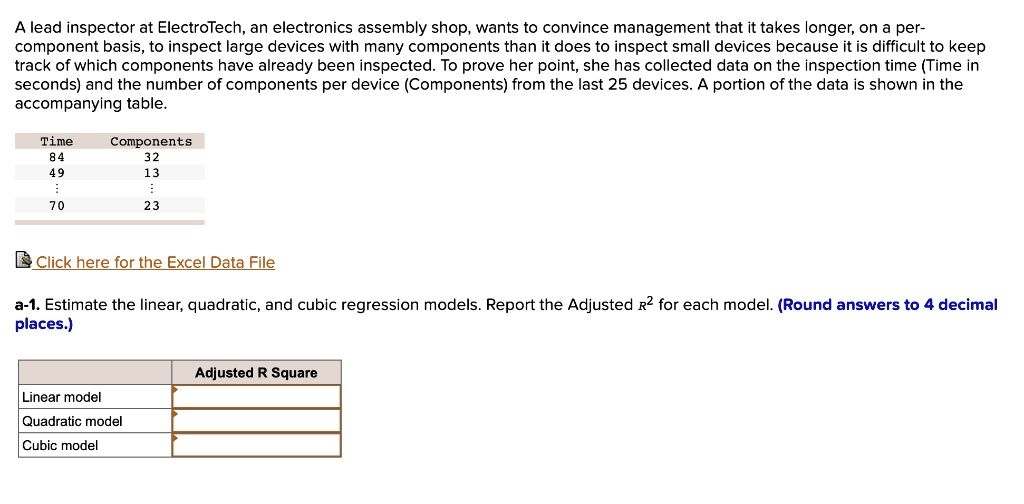


An advantage of traditional polynomial regression is that the inferential framework of multiple regression can be used (this also holds when using other families of basis functions such as splines). Some of these methods make use of a localized form of classical polynomial regression.

Therefore, non-parametric regression approaches such as smoothing can be useful alternatives to polynomial regression. This is similar to the goal of nonparametric regression, which aims to capture non-linear regression relationships.

The goal of polynomial regression is to model a non-linear relationship between the independent and dependent variables (technically, between the independent variable and the conditional mean of the dependent variable). These families of basis functions offer a more parsimonious fit for many types of data. In modern statistics, polynomial basis-functions are used along with new basis functions, such as splines, radial basis functions, and wavelets. A drawback of polynomial bases is that the basis functions are "non-local", meaning that the fitted value of y at a given value x = x 0 depends strongly on data values with x far from x 0. Polynomial regression is one example of regression analysis using basis functions to model a functional relationship between two quantities. Point-wise or simultaneous confidence bands can then be used to provide a sense of the uncertainty in the estimate of the regression function. Although the correlation can be reduced by using orthogonal polynomials, it is generally more informative to consider the fitted regression function as a whole. For example, x and x 2 have correlation around 0.97 when x is uniformly distributed on the interval (0, 1). It is often difficult to interpret the individual coefficients in a polynomial regression fit, since the underlying monomials can be highly correlated. as being distinct independent variables in a multiple regression model.Īlthough polynomial regression is technically a special case of multiple linear regression, the interpretation of a fitted polynomial regression model requires a somewhat different perspective. Therefore, for least squares analysis, the computational and inferential problems of polynomial regression can be completely addressed using the techniques of multiple regression. In general, we can model the expected value of y as an nth order polynomial, yielding the general polynomial regression modelĬonveniently, these models are all linear from the point of view of estimation, since the regression function is linear in terms of the unknown parameters a 0, a 1, . The fact that the change in yield depends on x is what makes the relationship nonlinear (this must not be confused with saying that this is nonlinear regression on the contrary, this is still a case of linear regression). In this model, when the temperature is increased from x to x + 1 units, the expected yield changes by a 1 + 2 a 2 x. In this case, we might propose a quadratic model of the form For example, if we are modeling the yield of a chemical synthesis in terms of the temperature at which the synthesis takes place, we may find that the yield improves by increasing amounts for each unit increase in temperature. In many settings, such a linear relationship may not hold. In this model, for each unit increase in the value of x, the conditional expectation of y increases by a 1 units. Is used, where ε is an unobserved random error with mean zero conditioned on a scalar variable x. The goal of regression analysis is to model the expected value of a dependent variable y in terms of the value of an independent variable (or vector of independent variables) x. The confidence band is a 95% simultaneous confidence band constructed using the Scheffé approach. More recently, the use of polynomial models has been complemented by other methods, with non-polynomial models having advantages for some classes of problems.ĭefinition and example File:Polyreg scheffe.svgĪ cubic polynomial regression fit to a simulated data set. In the twentieth century, polynomial regression played an important role in the development of regression analysis, with a greater emphasis on issues of design and inference. The first design of an experiment for polynomial regression appeared in an 1815 paper of Gergonne. The least-squares method was published in 1805 by Legendre and in 1809 by Gauss. The least-squares method minimizes the variance of the unbiased estimators of the coefficients, under the conditions of the Gauss–Markov theorem. Polynomial regression models are usually fit using the method of least squares.


 0 kommentar(er)
0 kommentar(er)
